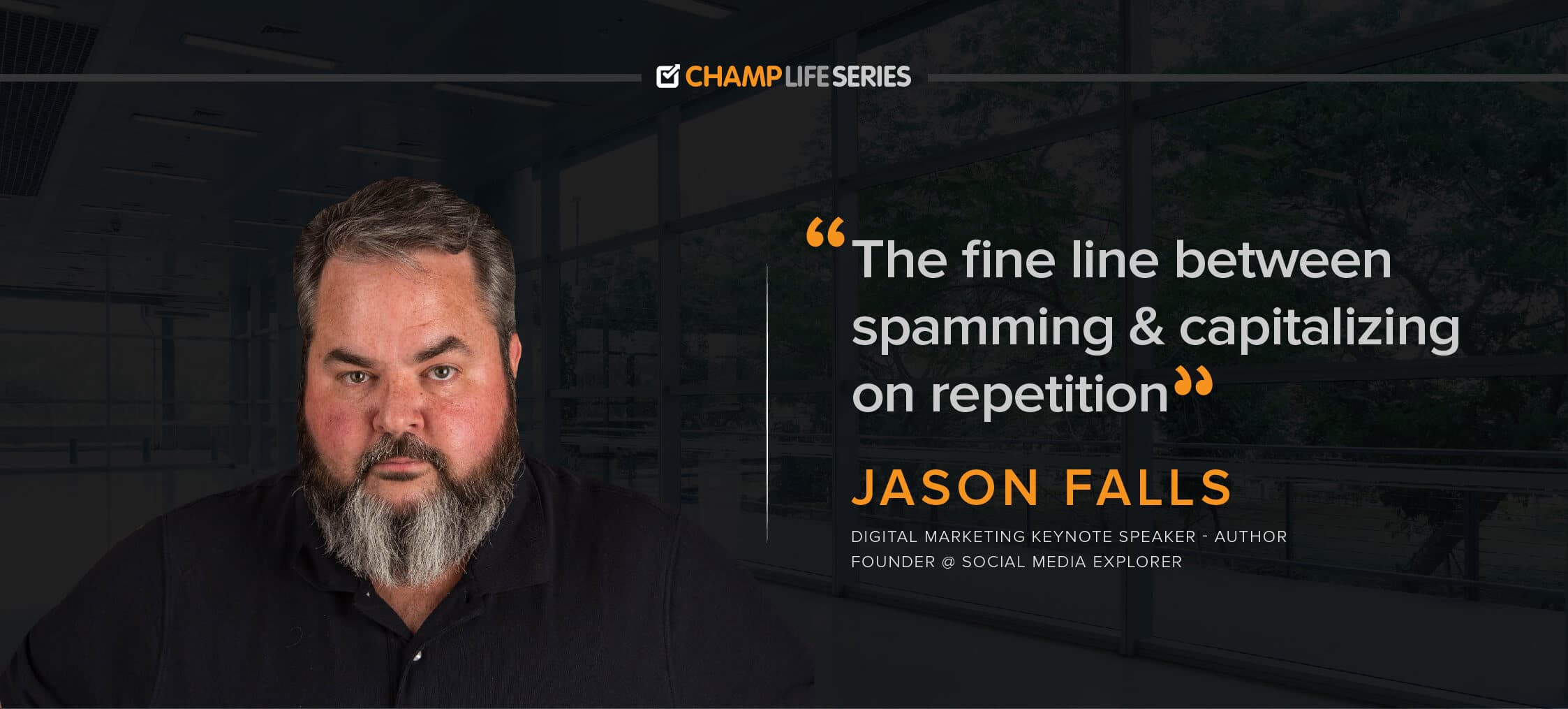Those who are new in the world of marketing often make a mistake: they separate social media marketing from search engine optimization. They have individual teams to focus on SEO and social media. And they briefly connect the two concepts by posting links to their social media pages.
That’s such a shame. It’s almost sad.
Table of Content: Top 5 Social Media and SEO Strategies
First, let’s make something clear: your social media activity will not boost your SEO attempts per se. There’s a reason why these are two separate categories in marketing: SEO and SMM. However, when you intertwine your social media pages with your SEO techniques, you’ll come down to a well-balanced strategy that works.
Let’s call it a social SEO strategy, which works in two main ways. The mentions you get all over the web matter as a ranking factor. Nobody can tell you what Google likes and how it does its ranking. This is what John Mueller, a Google webmaster trends analyst, said on the matter:
“There might be indirect effects where if someone is talking about your brand, then that’s something that might bring traffic indirectly to your website, which indirectly could bring more traffic to your site. But it’s not the case where we’d use that as a primary ranking factor and say people are talking about this brand. Therefore it must be a fantastic brand.”
How social media affects SEO and how to balance SEO and SMM strategy?
Brand mentions on social media aren’t a direct ranking factor. However, they help you boost brand awareness, so they bring more attention to your main site. Now that’s something that Google appreciates. Do you see the social media ranking concepts balancing in a perfect strategy?
Social media is an excellent place for your backlinking strategy. Links, no matter where they are posted, signal to the pages that they lead to. Google picks up these signals. If there’s a lot of activity on a post that links to your website, it’s a good sign.
Let’s get into the details, shall we?
This is not your average guide based on vague tips. We’ll give you exact guidelines on what to do to blend your social media marketing strategy into your SEO efforts.
The Ultimate 5 Social Media and SEO Strategies
Use Social Sharing to Strengthen Backlinks
The link-building concept is pretty simple. When you develop a high-quality post, you want more sources linking to it. You want these to be sources with high authority. If you can get your link into an influential blog from your niche, you’ll get more traffic, and Google’s algorithm will notice you.
Do backlinks still matter?
The answer to that question is yes. Backlinks still matter, but they have to be of high quality if you want them to make a positive impact on your organic search ranking.
That’s a common question among marketing experts. Link building strategies take a lot of time, effort, and finances. You have to hire professional writers, connect with bloggers who would feature your guest posts, and keep posting high-quality content on your website to gain natural links. If Google doesn’t notice backlinks, all this effort will go in vain.
You may have another question: what are high-quality backlinks?
Neil Patel gives us a good definition:“A quality backlink is a link that comes from a high domain authority website that is well-trusted by search engines and searchers alike.”
When you use a website backlink checker to see where your links are coming from, you don’t want any shady sites on the list. Their lousy reputation affects your reputation. But when you see high-authority websites linking to you, you can reinforce those backlinks through social media marketing.
Sharing blogs to your social pages is a good idea
Social media links can gain a lot of attention if they are attractive. Sharing blogs on your social pages is a good idea. You’ll trigger comments and re-shares, which will lead to more traffic on the website. That boosts the authority of those posts, and it directly affects the quality of your backlinks. Build your content strategy accordingly. Interviews and podcasts are the new kings in content marketing.
Collaborate with others in the same field. Invite social influencers or experts of the same industry to share their experiences. In today’s world of social media marketing, the thing that attracts the audience most is originality.
Let them see the real face of your brand. Give them a sneak peek of what’s next. Share it on social media. Tag the individuals you are interviewing. Whenever the blog’s author gets mentioned at another blog, he shares the link on Facebook.

This is how you reach out to your audience and say: “Hey, I’m important!” You bring your followers to that website. They will share the content (if it’s good) and lead more people there. Other authors will notice that, so they will link to your website, too. If you engage influencers in the sharing process, you gain even more authority.Getting the most of your social pages
The whole process of sharing your website blogs, interviews, or the latest news on social media can be automated by using a social media scheduling tool. You don’t have to worry about sharing the most recent blog on social channels manually. Connect the website with RSS feed through the tool, and every time you post a new blog on your site, it will automatically be shared on all the social profiles you connected.
Build Strong Partnerships
Your role in link building and brand mentions isn’t passive. Those who are new to online marketing believe that all they need to do is produce high-quality content and wait for authority sources to link to it.
No.
You need to create link opportunities, and you’ll do that by building strong partnerships. Yes, it means you’ll pay influencers to promote your content, products, and services. However, it also means that you’ll boost the positive brand mentions. Don’t get this wrong; not all partnerships require payment. You’ll also build a connection with the fans and followers of your brand.These are the three main types of connections you want:
Build Partnerships With Social Champ
Automate mentions by tagging public handles within the Social Champ dashboard while creating posts and schedule them accordingly!
A powerful relationship with fans and followers
When you show up on social media, you’re not doing that to inform your audience about your brand. You’re there to engage them. You’ll do it by inspiring discussions.
Justine Leconte is an excellent example of how it’s done. She has her own fashion label, but she doesn’t use her social media activity exclusively for its promotion. She educates her audience and inspires great discussions. Her YouTube channel is the medium where she builds strong connections with her audience.

Share insights from your industry! It’s how people start to love you and follow your brand. When they start believing in what you represent, they will become active brand advocates, who don’t require to be paid for promotion.Strategic partnerships with non-competitive brands
Can you team up with bloggers from your industry or brands that are related but not competitive to yours?
Think about the partnership between Red Bull and GoPro. Both brands are all about adrenaline, so they come together in the perfect marketing campaign that gets tons of shares across social media. Taco Bell and Doritos are other great examples of successful co-branding and co-marketing.

Image Source: Fast Company Organic partnerships with influencers
This is the type of social media marketing that requires a lower investment when compared to big influencers that you’d pay. Organic partnerships are based on genuine expertise and connection. Someone who truly believes in your brand and promotes it to their followers without getting compensated – that’s the person you want to connect with.
Do you want an example? Tim Urban, the blogger behind Wait But Why commonly mentions Tesla in his posts. He does that out of the sheer belief that the brand is doing something marvelous. His posts are known for lengthy discussions on social media, so you get how this activity affects the brand in question.
Optimize Your Content
Let’s talk about social media SEO – the point where social media marketing and search engine optimization meet. What do you need to get noticed on social media? – Content!
When you develop content for the sake of search engine optimization, you rely on keywords. This is an element that you can blend into your social media marketing process as well.
Facebook and Instagram will boost your posts if you pay for promotion. However, these platforms also want to deliver relevant content to their audience. If you use keywords related to your industry and the topics that you cover, your content will have a higher chance of reaching the target audience.
Add suitable keywords in the page bio and all post descriptions that you share. Social media channels have their own search engines. Google will also identify these keywords, so your posts might earn a place in their results (especially if the content accompanies impressive visuals).
If you search “Levi’s style” on Google, you’ll get many Pinterest posts in the image results. That’s because the brand is very active on Pinterest, and it curates the best content featuring its products. You’ll notice that many of these posts contain keywords. Here’s an example:

There’s no rule about the number of keywords to add to a social media post. On Instagram, in particular, you can use keywords as hashtags. However, there’s an unwritten rule to follow: don’t go overboard! You want your content to make sense.Mention Your Brand’s Values When Linking Back to Your Website
Your brand has to be identified with specific principles that mean something to the audience.
Customers are no longer interested solely in quality and price. They want to put their trust (and money) into brands that make the world a better place. TOMS is a great example of a brand that became popular not because its products are irreplaceable, but because it drew attention to world problems, and it helps with solutions.

This is a so-called cause marketing strategy. Instead of promoting your products, you promote a particular cause that gets support when people buy your products.But how is this connected to social media and SEO?
It’s simple: you’ll promote the cause across all social media channels. Whenever you talk about the cause on social media, you’ll include a link to your website, where people can get more information. Bringing awareness to an important issue will inspire more people to click that link. This means more traffic, which Google will notice.
Use Social Media to Engage Local Communities
If your business is focused on a local community, you’ll find it easy to engage your target audience on social media. You compete with fewer brands, and you target fewer people. You’ll connect with a few local influencers to promote your brand, and the followers will keep coming. There are a few other social media marketing techniques that help you target locals:
Interview local celebrities and share the content on social media.
This is how you’ll connect your SEO efforts with social media marketing. You’ll focus on SEO strategies when developing the website content, which you’ll then share across platforms to boost its popularity.
Organize events and share them on Facebook.
Those who are invited will choose “Going” or “Interested,” and their friends will get notified about the events. Some will share the event, so they will bring others along. With this technique, you’re making your social media pages more accessible. When you build an active local community through them, your website will gain more attention, too.
Use locations on Instagram and Facebook.
You can add the location to each post and the story you share. This is a good way of letting people know how relevant your brand is to their needs. They will know where to find your stores. If someone uses Google to search for a local business of your type, these posts will make a difference in the results.
Here’s how chef Bruno Albouze is doing it:

His posts target a global audience, but he still focuses on a local community because of the bistro bakery project located in San Diego, California.
It’s a Lot of Work!
When you combine your social media marketing with your search engine optimization strategies, promotion gets even more complicated. Where does social media stop, and where does SEO start? There’s no apparent limit, so everyone in the marketing team must collaborate with everyone else.
With the tips presented above, you’ll be able to grow your community on social media. You’ll post more relevant content, and you’ll bring more attention to the website, where the SEO action happens.
The main tip that works for all marketing strategies is to know what your audience wants. Get them involved and excited about what your brand represents. When you get that covered, Google will become your fan, too.




















7 thoughts on “Top 5 Social Media and SEO Strategies You Can Use to Boost Your Traffic”
Great blog, such SEO practices are very helpful nowadays.
Looking forward to you for more blogs like this.
I came here looking for some SEO strategies and I found some great methods which I will use to boost my website SEO. Thanks for sharing the article.
Great blog, very helpful for me.
Great Work!!!
I like the valuable information you provide in your articles. Thanks for sharing.
Hello,
You have posted a nice and informative article named social media and seo, I learn a lot from your post. Go ahead, keep up the good work.
Regards
It is an amazing post and you explained it in a detailed way. Nice to see this here. I will bookmark your blog for more details. Keep sharing new things like this.